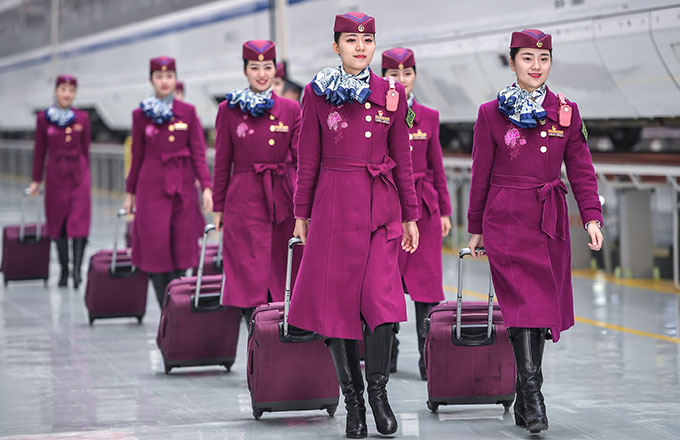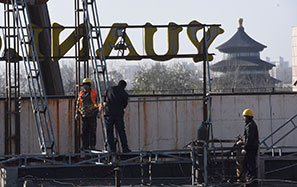A shift toward climate leadership
Amid global uncertainty about future US policy, China could set the pace for environmental action
Implementation was the keyword for the 22nd Conference of Parties meeting (COP22), recently held in Marrakech, Morocco. In October, 113 out of 197 parties to the United Nations Framework Convention on Climate Change ratified the Paris Agreement, representing 80 percent of global CO2 emissions.
Following this achievement, two urgent matters lie ahead: the development of elaborate and concrete road maps to achieve the goals set in the agreement and fulfilling what is left in the Kyoto Protocol. Marrakech was, without doubt, the beginning of the post-Paris era.
Climate finance was under the spotlight during the conference, discussed widely across national pavilions and at side events. Deep concerns were shared by developing countries, especially the least developed and most vulnerable. Although developed countries promised at Copenhagen in 2009 to give annual aid of $100 billion (94 billion euros; 79 billion) from 2010 to 2020 to help developing countries cope with climate change, so far there is still an annual $40 to $70 billion gap to fill. Additionally, this is only the financing shortage within the Kyoto time frame. The world is facing an even bigger challenge when it comes to the Paris Agreement.
Last year, before the Paris Conference, developed countries, led by the European Union and the United States, secretly formed a "high ambition coalition" with 79 African, Caribbean, and Pacific countries, but excluding China and India. The group emerged at the end of the conference to push for a legally binding plan to hold the global temperature increase to within 1.5 C by 2100, instead of the former agreed target of 2 C. The final version of the Paris Agreement, therefore, states "pursuing efforts to limit the temperature increase to 1.5 C above pre-industrial levels". This plan serves the best interests of vulnerable countries. But the climate finance conundrum dragged the ambition down to earth at COP22, with the name "Donald Trump" contributing to the process.
Noticeably, the landscape of climate leadership is shifting toward the east. China was widely expected to play a leading role at COP22, an expectation reinforced by the pessimistic atmosphere created by Trump's election. Over the years, China has indeed proactively helped other developing countries on climate change. From 2011, China has invested more than $1 billion to help African and vulnerable countries. In last year's US-China Joint Presidential Statement on Climate Change, China committed to establishing the South-South Cooperation on Climate Change Fund and to provide $3.1 billion in three years. This will finance programs including infrastructure construction, personnel training and capacity building in developing countries. At COP22, this commitment was strengthened again by Xie Zhenhua, China's special representative on climate change affairs, during the High-Level Forum on South-South Cooperation on Climate Change, which was the most important event in the China pavilion. During the forum, the COP22 president, UN officials and dozens of ministers from developing countries shared their views and visions on south-south cooperation and China's positive role in it.
By incorporating climate change in south-south cooperation, China expanded the scope for foreign aid, which is widely recognized as an important strategy in every country's foreign policy portfolio. The poor and vulnerable countries cry for money, technology and expertise to adapt to climate change and develop a green economy. In this sense, conventional foreign aid targets such as poverty, health and education can be considered more broadly as climate change issues.
Geopolitically, large powers compete for greater influence in global governance through foreign aid programs. The gap in climate financing therefore offers considerable opportunities for competitive donors to influence the climate agenda and international affairs more generally. In this potential competition, China has many advantages, including empathy for the need for economic development and the necessity of cooperation. This has resulted in China's "assistance-plus investment" foreign aid model.
International opinion on China's foreign aid, however, is extremely polarized. Some argue that China's no "strings attached" approach is efficient and generates win-win outcomes. Others criticize this direct, economically-driven assistance as a form of neocolonialism.
Unarguably, China's influence on less-developed countries has been growing rapidly, along with growing concern from the West. The reasons behind this come not only from concerns that China may undermine the democratic process of these countries but also, and more important, from the fear of losing advantages they earn from their own foreign aid programs.
The elephant in the room at COP22 was the question, Does Trump fear losing these advantages? He claimed on the campaign trail that he would halt US funding for UN climate change programs, seemingly undermining US President Barack Obama's original commitment of $3 billion. What he will actually do once in office remains to be seen.
Regardless, China is taking on a growing leadership role in global climate governance. It is inevitable that the shifting landscape toward China's leadership will put pressure on the US in terms of its global image and influence. The world can only hope that, as a self-proclaimed successful investor, Trump will come to agree with Obama that climate finance is "a smart investment for us to make".
Qi Ye is director of the Brookings-Tsinghua Center for Public Policy in Beijing; Zhu Mengye is a doctoral candidate at Tsinghua University. The views do not necessarily reflect those of China Daily.


















